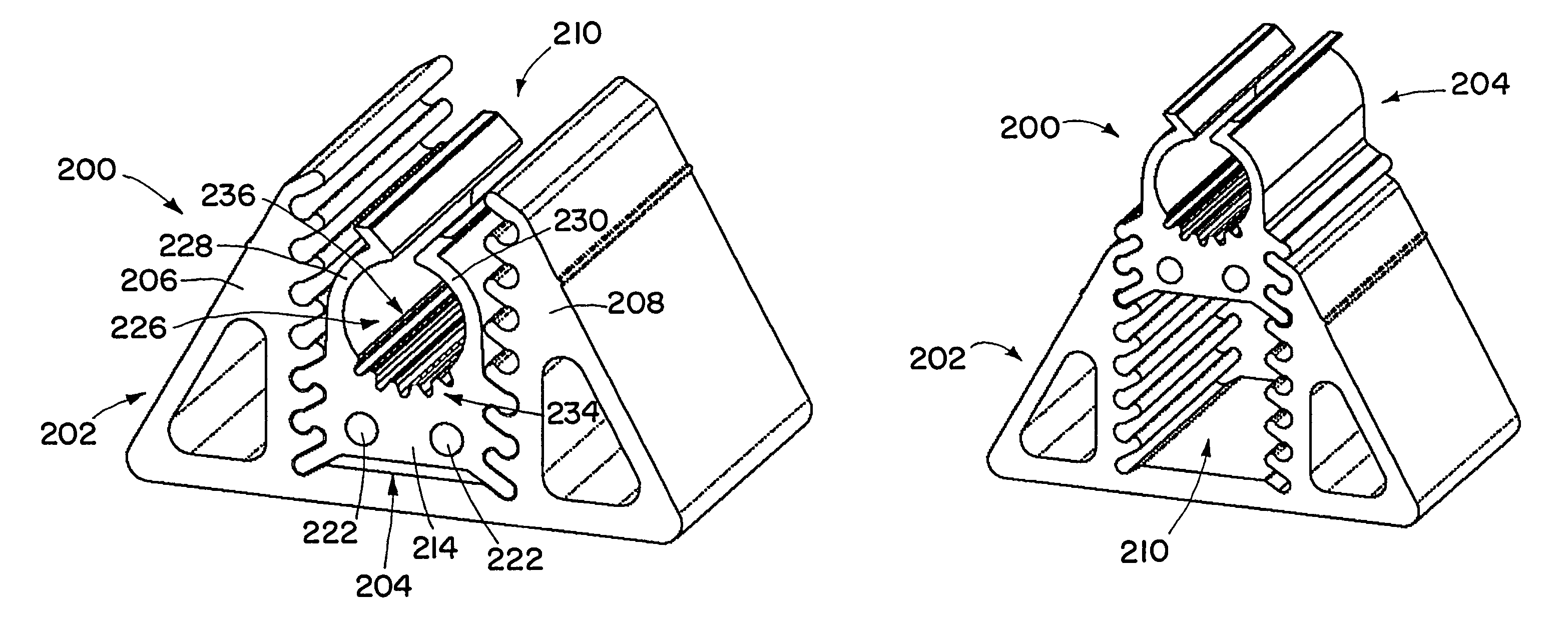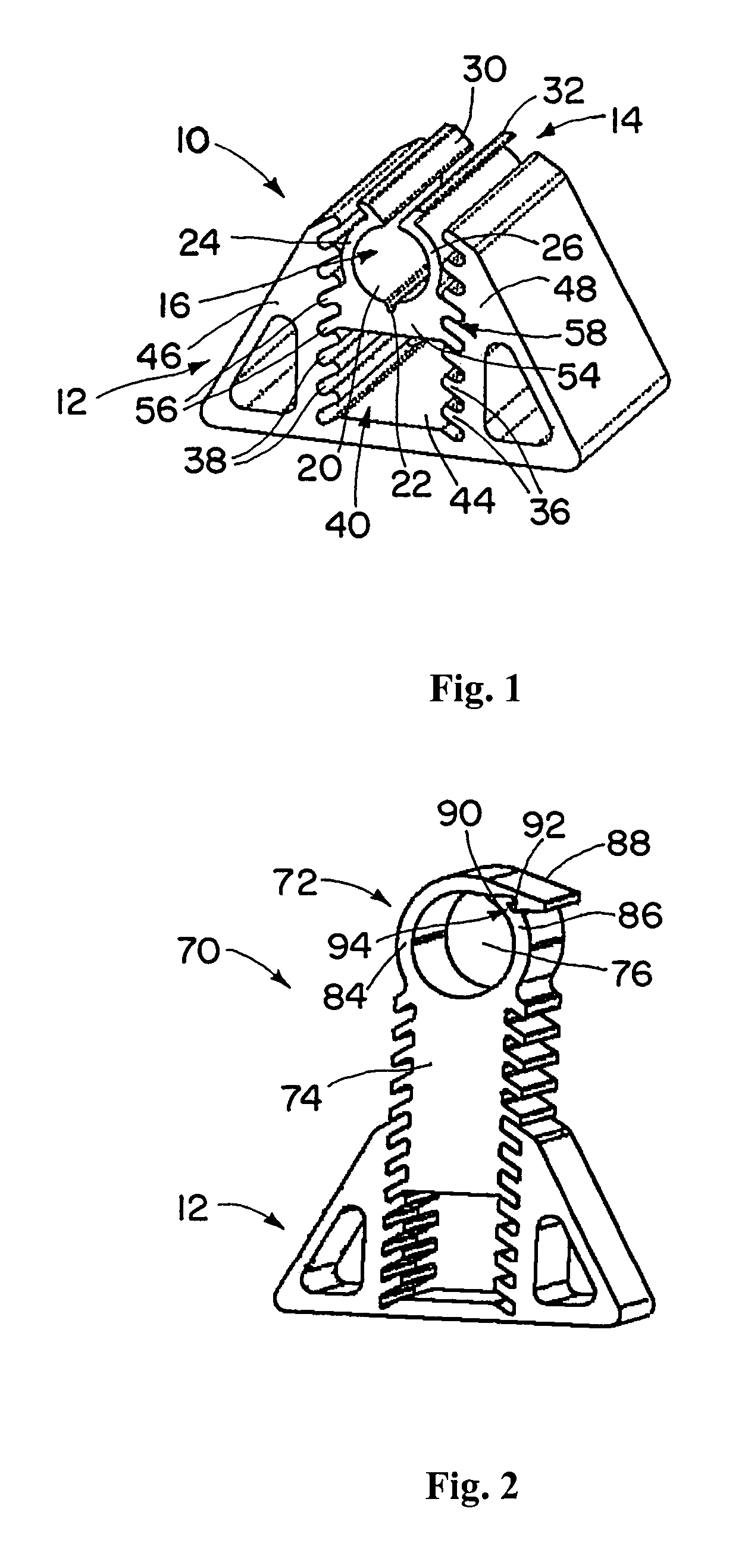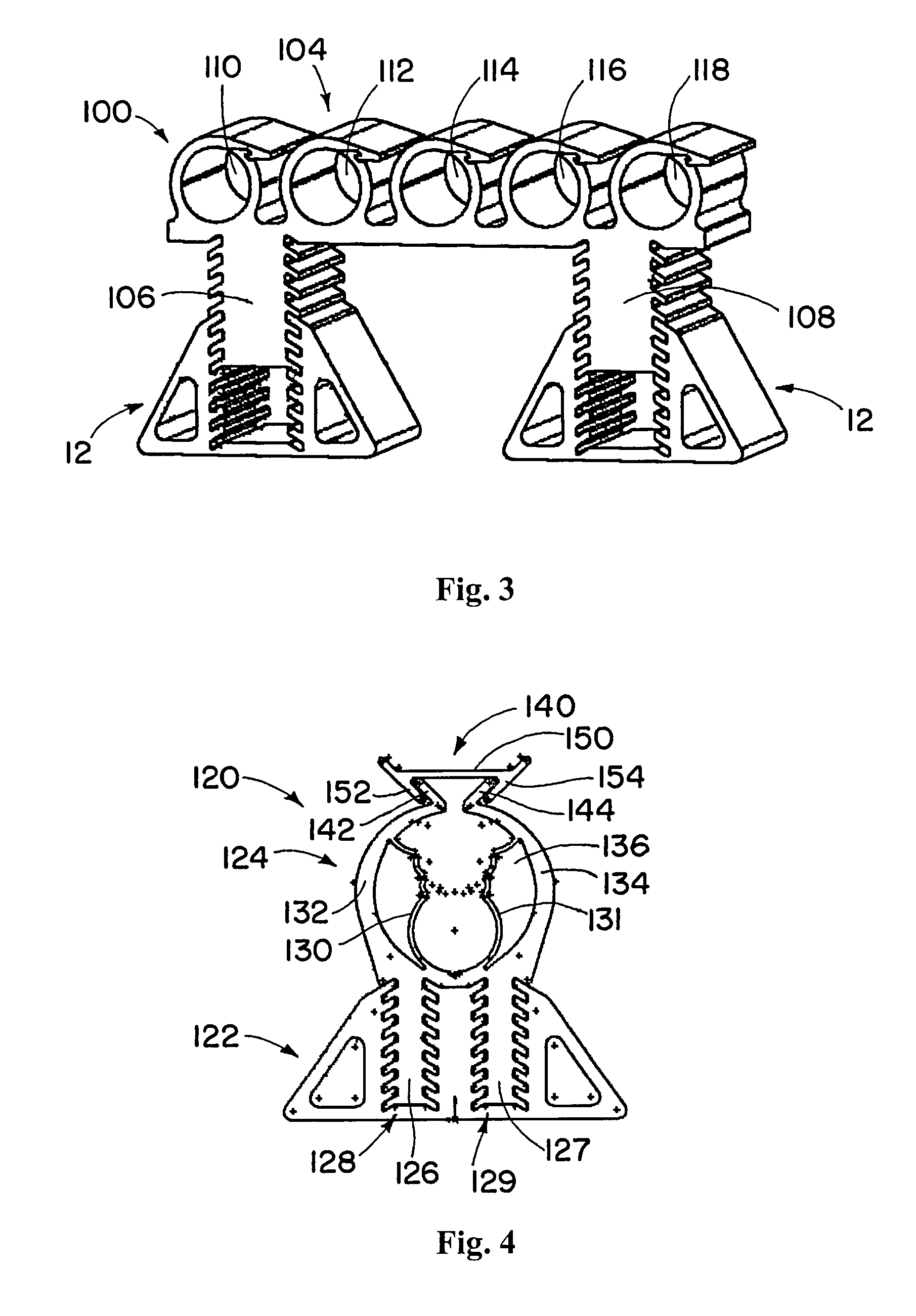Modular rooftop pipe support
a technology of roof supports and modules, applied in the direction of tables/trestles, kitchen equipment, domestic applications, etc., can solve the problems of splinters or sharp edges of wood that can penetrate the roof membrane, wood will eventually rot, and hardware will rust, so as to facilitate the elevation change
- Summary
- Abstract
- Description
- Claims
- Application Information
AI Technical Summary
Benefits of technology
Problems solved by technology
Method used
Image
Examples
Embodiment Construction
[0053]An extruded or molded elastomeric (e.g., rubber) or polymeric multi-piece (e.g., two-piece) modular pipe support system utilizes a wide base with protrusions and / or recesses, and a separate top with recesses and / or protrusions that engage the protrusions and / or recesses of the top. The tops are configured to securely capture a pipe / conduit without any additional parts, straps, etc. The top may have one or more pipe-receiving recesses for receiving the pipes (conduits).
[0054]FIG. 1 shows a small base support with a plug insert for elevations below 10 cm (4 inches). The support 10 includes a base 12 and an insert (top portion) 14. The terms “insert” and “top portion” may be used interchangeably in this description for parts that engage bases of various supports. The insert 14 has a pipe-receiving recess 16 for receiving one or more pipes or other objects. The term pipe, as used in this description, should be construed broadly to include other objects that could be support along ...
PUM
 Login to View More
Login to View More Abstract
Description
Claims
Application Information
 Login to View More
Login to View More - R&D
- Intellectual Property
- Life Sciences
- Materials
- Tech Scout
- Unparalleled Data Quality
- Higher Quality Content
- 60% Fewer Hallucinations
Browse by: Latest US Patents, China's latest patents, Technical Efficacy Thesaurus, Application Domain, Technology Topic, Popular Technical Reports.
© 2025 PatSnap. All rights reserved.Legal|Privacy policy|Modern Slavery Act Transparency Statement|Sitemap|About US| Contact US: help@patsnap.com



